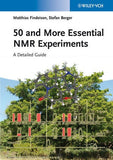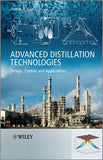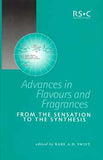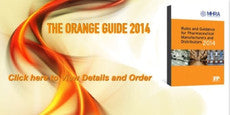Distillation Control, Optimization, and Tuning: Fundamentals and Strategies by Lanny Robbins
Special Indian reprint !
Reprinted Ed. 2016, April 5, 2011 by CRC Press
Reference - 144 Pages - 25 B/W Illustrations
Features
- Focuses on the fundamentals and process control strategies of distillation columns
- Covers process variables for continuous distillation
- Discusses concepts that have proved successful
- Provides the four basic control strategies and examples of use
- Includes tools and techniques to optimize performance
Summary
Emphasis on improved quality and performance of distilled products and the demand for reduced operating costs place a heavy burden on both the personnel responsible for profitability and the manufacturing department charged with operating the processing equipment. There have been dramatic improvements in the computer software and hardware used to simulate and model the distillation process and potential response to experimentation, but mastering the art of distillation process and control still requires solid understanding of a large body of information.
With a focus on achieving product purity at low cost, Distillation Control, Optimization, and Tuning: Fundamentals and Strategies highlights core concepts. These include process variables for continuous binary distillation columns and the four basic control strategies, the distillate and bottoms product quality performance objectives, and the tuning of process control loops. Without dwelling on complex mathematical descriptions, the book presents the fundamentals of process control of a distillation column as a separation and purification unit operation. It covers the concepts and functional criteria that are critical to successful implementation of process control, as well as measurement and improvement of product quality performance. It describes how process control loops for distillation columns can be tuned for stable operation, with a balance between minimum variability from setpoint changes and excellent response to load disturbances.
Designed for students, engineers, technicians, and plant operators alike, this book emphasizes the prevailing need to strike a balance between the details of hypotheses and good engineering judgment. The author outlines learning objectives at the beginning of each chapter and includes chapter-end summaries, exercises, and references to help readers acquire essential knowledge and understanding. The result is a resource that will inform future decisions for the design, operation, and troubleshooting of distillation process control systems.
Table of Contents
Unit 1: Introduction and Overview
Course Coverage
Purpose
Audience and Prerequisites
Study Materials
Organization and Sequence
Course Objectives
Course Length
Unit 2: Distillation Control Variables
Distillation Column Inlet Streams
Distillation System Outlet Streams
Controlled Variables
Unit 3: Separation Power
Relative Volatility in One Theoretical Stage
Separation Power with Multiple Stages
Separation Power and Energy Consumption
Unit 4: Distillate/Feed Material Balance Split
Material Balances
Temperature Gradient per Theoretical Stage
Temperature Change from D/F Shift
Unit 5: Distillation Control Strategies
Column Pressure Control
Temperature Control with Distillate Flow Rate
Temperature Control with Reflux Flow Rate
Temperature Control with Boilup(Steam Rate)
Temperature Control with Bottoms Flow Rate
Side Draw Flow Rate
Distillate Vapor Flow Rate
Unit 6: Constraints
Mechanical and Hydraulic Constraints
Heat Transfer Constraints
Stripping Mass Transfer Constraint
Rectification (Absorption) Mass Transfer Constraint
Unit 7: Optimizing Product Quality Performance
Quality Performance Measurement
Frequency of Failure
Optimize MRT Between Distillate and Bottoms Quality
Avoid Excessive Use of Steam
Reduce Variability
Optimize with Expert System Advisor
Unit 8: PID Feedback Control Loop
The Feedback Control Loop
Proportional
Integral
Derivative
Parallel and Series Algorithms
Unit 9: Closed Loop Tuning of Controllers
Trial and Error Tuning of Control Loops
Ultimate Gain Tuning of Control Loops
Troubleshooting an Oscillating Control Loop
Quarter Decay Ratio tuning of Control Loops
Pattern Recognition Tuning of Self Regulating Control Loops
Effect of Proportional Gain
Effect of Integral (Reset) Action
Pattern Recognition Tuning of Integrating Control Loops
Unit 10: Open Loop Testing of Process Response
Self Regulating Process Response
Ziegler-Nichols (Z-N) Open Loop Tuning Rules
Two Point Characterization of FOPDT Process Response
Quarter Decay Ratio (QDR) Tuning Rules
Internal Model Control (IMC) Tuning Rules
Integrating Process Response
Appendix


















